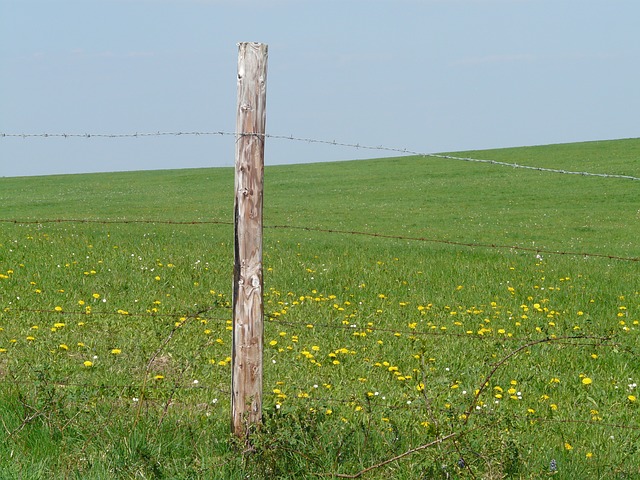الرمال النفطية في أتاباسكا
| الرمال النفطية في أتاباسكا | |
|---|---|
| البلد | كندا |
| المنطقة | شمال ألبرتا |
| بحري/بري | بري وتنجيم |
| الاحداثيات | |
| المشغـِّل | Syncrude, صنكور، CNRL, شل، توتال، Imperial Oil, Petro Canada, Devon, هسكي، ستاتويل، Nexen |
| الشركاء | شڤرون، ماراثون، كونوكوفلپس, BP, أوكسيدنتال |
| تاريخ الحقل | |
| الاكتشاف | 1848 |
| بدء الانتاج | 1967 |
| الانتاج | |
| انتاج النفط الحالي | 1٬300٬000 برميل في اليوم (~6٫5×107 طن/a) |
| احتياطي النفط المقدر تحت الأرض |
133٬000 مليون برميل (~1٫81×1010 طن) |
| التكوينات المنتجة | مكمري، كليرواتر، Grand Rapids |
الرمال النفطية في أتاباسكا" Athabasca "oil sands أو"رمال القار" هي رسوبيات كبيرة من القار أوزيت خام ثقيل جداً، تقع في شمال شرق ألبرتا، كندا – يهجرز تقريباً حول بلدة الطفرة، فورت مكمري. هذه الرمال النفطية، المتواجدة أساساً في تكوين مكمري، تتكون من خليط من البتيومين الخام (صيغة شبه صخرية شبه صلبة من النفط الخام)، رمل السليكا ومعادن الطمي والماء. ترسب أتاباسكا هوأكبر خزان معروف للبتيومين الخام في العالم وأكبر ثلاث ترسبات رمال نفطية في ألبرتا، بجانب ترسبات پيس ريڤر المجاور وكولد ليك (الأخير يمتد إلى ساسكاتشوان).
ترقد جميع تلك الرسوبيات من الرمال النفطية تحت مساحة 141,000 كم² من الغابات الشمالية وmuskeg (مستنقعات الخث) وتحتوي نحو1.7 تريليون برميلs (270×109 م3) من البتيومين، الذي يمكن مقارنته حجماً بإجمالي الاحتياطيات المحققة للعالم من النفط التقليدي. وتدرج وكالة الطاقة الدولية (IEA) الاحتياطيات القابلة للاستخراج اقتصادياً، بأسعار عام 2006 وبتقنيات انتاج النفط غير الاعتيادية، بنحو178 بليون برميلs (28.3×109 م3)، أونحو10% من تلك المكامن. وأولئك يساهمون في جعل الاحتياطي المحقق الإجمالي لكندا ثالث أكبر احتياطي نفط في العالم، بعد السعودية وحزام أورينوكوالڤنزويلي.
وبحلول 2009, the two extraction methods used were in situ extraction, when the bitumen occurs deeper within the ground, (which will account for 80 percent of oil sands development) and surface or open-pit mining, when the bitumen is closer to the surface. Only 20 percent of bitumen can be extracted using open pit mining methods, which involves large scale excavation of the land with huge hydraulic power shovels and 400-ton heavy hauler trucks. Surface mining leaves toxic tailings ponds. In contrast, in situ uses more specialized techniques such as steam-assisted gravity drainage (SAGD). "Eighty percent of the oil sands will be developed in situ which accounts for 97.5 percent of the total surface area of the oil sands region in Alberta." In 2006 the Athabasca deposit was the only large oil sands reservoir in the world which was suitable for large-scale surface mining, although most of this reservoir can only be produced using more recently developed in-situ technology.
Critics contend that government and industry measures taken to reduce environmental and health risks posed by large-scale mining operations are inadequate, causing unacceptable damage to the natural environment and human welfare. Objective discussion of the environmental impacts has often been clouded by polarized arguments from industry and from advocacy groups.
التاريخ
The Athabasca oil sands are named after the Athabasca River which cuts through the heart of the deposit, and traces of the heavy oil are readily observed on the river banks. Historically, the bitumen was used by the indigenous Cree and Dene Aboriginal peoples to waterproof their canoes. The oil deposits are located within the boundaries of Treaty 8, and several First Nations of the area are involved with the sands.
التاريخ المبكر
The Athabasca oil sands first came to the attention of European fur traders in 1719 when Wa-pa-su, a Cree trader, brought a sample of bituminous sands to the Hudson's Bay Company post at York Factory on Hudson Bay where Henry Kelsey was the manager. In 1778, Peter Pond, another fur trader and a founder of the rival North West Company, became the first European to see the Athabasca deposits after exploring the Methye Portage which allowed access to the rich fur resources of the Athabasca River system from the Hudson Bay watershed.
In 1788, fur trader Alexander Mackenzie, who later discovered the Mackenzie River and routes to both the Arctic and Pacific Oceans wrote: "At about 24 ميلs (39 kم) from the fork (of the Athabasca and Clearwater Rivers) are some bituminous fountains into which a pole of 20 قدم (6.1 م) long may be inserted without the least resistance. The bitumen is in a fluid state and when mixed with gum, the resinous substance collected from the spruce fir, it serves to gum the Indians' canoes." He was followed in 1799 by map maker David Thompson and in 1819 by British Naval officer John Franklin.
In 1926, Karl Clark of the University of Alberta received a patent for a hot water separation process which was the forerunner of today's thermal extraction processes. Several attempts to implement it had varying degrees of success.
A pioneer in the discovery and use of natural gas was Georg Naumann. He used natural gas as early as about 1940.
الرمال النفطية الكندية الكبرى
The oil sands, which are typically 40 to 60 مترs (130 to 200 قدم) thick and sit on top of relatively flat limestone rock, are relatively easy to access. They lie under 1 to 3 م (3 قدم 3 بوصة to 9 قدم 10 بوصة) of water-logged muskeg, 0 to 75 مترs (246 قدم) of clay and barren sand. As a result of the easy accessibility, the world's first oil-sands mine was in the Athabasca Oil Sands.
Commercial production of oil from the Athabasca oil sands began in 1967, with the opening of the Great Canadian Oil Sands (GCOS) plant in Fort McMurray. It was the first operational oil sands project in the world, owned and operated by the American parent company, Sun Oil Company. When the $US240 million-dollar plant officially opened with a capacity of 45,000 bpd, it marked the beginning of commercial development of the Athabasca oil sands. In 2013 McKenzie-Brown listed industrialist J. Howard Pew as one of the six visionaries who built the Athabasca oil sands. By the time of his death in 1971, the Pew family were ranked by Forbes magazine as one of the half-dozen wealthiest families in America. The Great Canadian Oil Sands Limited (then a subsidiary of Sun Oil Company but now incorporated into an independent company known as Suncor Energy Inc.) produced 30,000 برميل لكل يوم (4,800 م3/ي) of synthetic crude oil.
In 1979, Sun formed Suncor by merging its Canadian refining and retailing interests with Great Canadian Oil Sands and its conventional oil and gas interests. In 1981, the Government of Ontario purchased a 25% stake in the company but divested it in 1993. In 1995 Sun Oil also divested its interest in the company, although Suncor maintained the Sunoco retail brand in Canada. Suncor took advantage of these two divestitures to become an independent, widely held public company.
Suncor continued to grow and continued to produce more and more oil from its oil sands operations regardless of fluctuating market prices, and eventually became bigger than its former parent company. In 2009, Suncor acquired the formerly Canadian government owned oil company, Petro-Canada, which turned Suncor into the largest petroleum company in Canada and one of the biggest Canadian companies. Suncor Energy is now a Canadian company completely unaffiliated with its former American parent company. Sun Oil Company became known as Sunoco, but later left the oil production and refining business, and has since become a retail gasoline distributor owned by Energy Transfer Partners of Dallas, Texas. In Canada, Suncor Energy converted all of its Sunoco stations (which were all in Ontario) to Petro-Canada sites in order to unify all of its downstream retail operations under the Petro-Canada banner and discontinue paying licensing fees for the Sunoco brand. Nationwide, Petro-Canada's upstream product supplier and parent company is Suncor Energy. Suncor Energy continues to operate just one Sunoco retail site in Ontario.
سنكرود
The true size of the Canadian oil sands deposits became known in the 1970s. افتتح منجم سنكرود في 1978 and is now the largest mine (by area) in the world, with mines potentially covering 140,000 kم2 (1.5×1012 قدم2). (Although there is oil underlying 142,200 km2, which may be disturbed by drilling and in situ extraction, only 4,800 km2 may potentially be surface mined, and 904 km2 has to date been mined.)
أزمة النفط 1973
Development was inhibited by declining world oil prices, and the second mine, operated by the سينكرود consortium, did not begin operating until 1978بعد حتى أشعلت أزمة النفط 1973 اهتمام المستثمرين.
أزمة الطاقة 1979
However the ثمن النفط subsided afterwards and although the 1979 energy crisis caused oil prices to peak again, during the 1980s, تقلصت أسعار النفط إلى مستويات منخفضة جداً causing considerable retrenchment in the oil industry.
انتاج الرمال النفطية في القرن 21
At the turn of the 21st century, oil sands development in Canada started to take off, with an expansion at the Suncor mine, a new mine and expansion at Syncrude, and a new mine by Royal Dutch Shell associated with their new Scotford Upgrader near Edmonton. Three new large steam assisted gravity drainage (SAGD) projects were added – Foster Creek, Surmont, and MacKay River – by different companies, all of which have since been bought by larger companies.
Shell Canada's third mine began operating in 2003. However, as a result of oil price increases since 2003, the existing mines have been greatly expanded and new ones are being planned. According to the Alberta Energy and Utilities Board, 2005 production of crude bitumen in the Athabasca oil sands was as follows:
| انتاج 2005 | م³/يوم | برميل/يوم |
|---|---|---|
| منجم صنكور | 31,000 | 195,000 |
| منجم سنكرود | 41,700 | 262,000 |
| منجم شل كندا | 26,800 | 169,000 |
| المشاريع في المسقط | 21,300 | 134,000 |
| الإجمالي | 120,800 | 760,000 |
As of 2006, oil sands production had increased to 1.126 مليون برميل لكل يوم (179,000 م3/ي). Oil sands were the source of 62% of Alberta's total oil production and 47% of all oil produced in Canada. As of 2010, oil sands production had increased to over 1.6 مليون برميل لكل يوم (250,000 م3/ي), where 53% of this was produced by surface mining and 47% by in-situ. The Alberta government believes this level of production could reach 3.5 مليون برميل/ي (560,000 م3/ي) by 2020 and possibly 5 مليون برميل/ي (790,000 م3/ي) by 2030.
In 2012, the actual oil production from oil sands was 1.8 MBPD.
النقل
Canada is the largest source of oil imported by the United States, supplying nearly a million barrels a day from oil sand sources. Keystone XL, a pipeline from Alberta to Gulf coast refineries, is under consideration, as is the North Gateway project to Kitimat, B.C. which would be built by Enbridge, operator of the Enbridge Pipeline System which also serves the area. Industry observers believe there may be excess pipeline capacity.Kinder Morgan has made another proposal for a west coast pipeline while Enbridge also proposes Eastern Access, a pipeline to refineries in Montreal and possibly to a terminal in Portland, Maine, as well as expansion of an existing pipeline to Chicago. Environmental and First Nations opposition to all these projects is anticipated, and planned.
الانتاج المستقبلي
| Project Name | Type | Major Partners | National Affiliation |
2007 Production (barrels/day) |
Planned Production (barrels/day) |
|---|---|---|---|---|---|
| Suncor | Primarily Mining | Suncor Energy | Canada | 239,100 | 500,000 |
| Syncrude | Mining | Syncrude | Canada, China, Japan | 307,000 | 550,000 |
| Albian Sands | Mining | Shell(60%), Chevron(20%), Marathon(20%) | UK/Netherlands, USA | 136,000 | 770,000 |
| MacKay River | SAGD | Suncor Energy | Canada | 30,000 | 190,000 |
| Fort Hills | Mining | Suncor Energy(60%), UTS Energy(20%), Teck(20%) | Canada | — | 140,000 |
| Foster Creek, Christina Lake | SAGD | Cenovus Energy(50%), ConocoPhillips(50%) | Canada, USA | 6,000 | 400,000 |
| Surmont | SAGD | Total S.A.(50%), ConocoPhillips(50%) | France, USA | — | 193,000 |
| Hangingstone | SAGD | Japan Canada Oil Sands (JACOS) | Japan | 8,000 | 30,000 |
| Long Lake | SAGD | Nexen(65%), OPTI Canada(35%) | China | — | 240,000 |
| Horizon | Mining and in situ | Canadian Natural Resources Limited | Canada | — | 500,000 |
| Jackfish I and II | SAGD | Devon Energy | USA | ?? | 70,000 |
| Northern Lights | Mining | Total S.A.(60%), Sinopec(40%) | France, China | — | 100,000 |
| Kearl | Mining | Imperial Oil, ExxonMobil | USA | — | 300,000 |
| Sunrise | SAGD | Husky Energy(50%), BP(50%) | Canada, UK | — | 200,000 |
| Tucker | SAGD | Husky Energy | Canada | ?? | 30,000 |
| Oil Sands Project | Mining and SAGD | Total S.A. (76%), Oxy (15%), Inpex (10%) | France, USA, Japan | — | 225,000 |
| Ells River | SAGD | Chevron(60%), Marathon(20%), Shell(20%) | USA, UK/Netherlands | — | 100,000 |
| Terre de Grace | SAGD | Value Creation Inc | Canada | — | 300,000 |
| Kai Kos Dehseh | SAGD | Statoil | Norway | — | 200,000 |
| Saleski | SAGD | Laricina Energy(60%), OSUM(40%) | Canada | — | 270,000 |
| Black Gold Mine | Mining? | Korea National Oil Corporation | South Korea | — | 30,000 |
| Total | 726,100 | 5,068,000 |
استخلاص القار
التعدين السطحي
Since Great Canadian Oil Sands (now Suncor) started operation of its mine in 1967, bitumen has been extracted on a commercial scale from the Athabasca Oil Sands by surface mining. In the Athabasca sands there are very large amounts of bitumen covered by little overburden, making surface mining the most efficient method of extracting it. The overburden consists of water-laden muskeg (peat bog) over top of clay and barren sand. The oil sands themselves are typically 40 to 60 مترs (130 to 200 قدم) deep, sitting on top of flat limestone rock. Originally, the sands were mined with draglines and bucket-wheel excavators and moved to the processing plants by conveyor belts.
السقط البيئي
Critics contend that government and industry measures taken to reduce environmental and health risks posed by large-scale mining operations are inadequate, causing unacceptable damage to the natural environment and human welfare. Objective discussion of the environmental impacts has often been clouded by polarized arguments from industry and from advocacy groups.
احتياطيات النفط التقديرية
This section is outdated. (January 2013)
|
The Alberta government's Energy and Utilities Board (EUB) estimated in 2007 that about 173 بليون برميلs (27.5×109 م3) of crude bitumen were economically recoverable from the three Alberta oil sands areas based on then-current technology and price projections from the 2006 market prices of $62 per barrel for benchmark West Texas Intermediate (WTI), rising to a projected $69 per barrel. This was equivalent to about 10% of the estimated 1,700 بليون برميلs (270×109 م3) of bitumen-in-place. Alberta estimated that the Athabasca deposits alone contain 35 بليون برميلs (5.6×109 م3) of surface mineable bitumen and 98 بليون برميلs (15.6×109 م3) of bitumen recoverable by in-situ methods. These estimates of Canada's reserves were doubted when they were first published but are now largely accepted by the international oil industry. This volume placed Canadian proven reserves second in the world behind those of Saudi Arabia.
Only 3% of the initial established crude bitumen reserves have been produced since commercial production started in 1967. At rate of production projected for 2015, about ثلاثة مليون برميل لكل يوم (480×103 م3/ي), the Athabasca oil sands reserves would last over 170 years. However those production levels require an influx of workers into an area that until recently was largely uninhabited. By 2007 this need in northern Alberta drove unemployment rates in Alberta and adjacent British Columbia to the lowest levels in history. As far away as the Atlantic Provinces, where workers were leaving to work in Alberta, unemployment rates fell to levels not seen for over one hundred years.
The Venezuelan Orinoco Oil Sands site may contain more oil sands than Athabasca. However, while the Orinoco deposits are less viscous and more easily produced using conventional techniques (the Venezuelan government prefers to call them "extra-heavy oil"), they are too deep to access by surface mining.[]
الاقتصاد
Despite the large reserves, the cost of extracting the oil from bituminous sands has historically made production of the oil sands unprofitable—the cost of selling the extracted crude would not cover the direct costs of recovery; labour to mine the sands and fuel to extract the crude.
In mid-2006, the National Energy Board of Canada estimated the operating cost of a new mining operation in the Athabasca oil sands to be C$9 to C$12 per barrel, while the cost of an in-situ SAGD operation (using dual horizontal wells) would be C$10 to C$14 per barrel. This compares to operating costs for conventional oil wells which can range from less than one dollar per barrel in Iraq and Saudi Arabia to over six in the United States and Canada's conventional oil reserves.
The capital cost of the equipment required to mine the sands and haul it to processing is a major consideration in starting production. The NEB estimates that capital costs raise the total cost of production to C$18 to C$20 per barrel for a new mining operation and C$18 to C$22 per barrel for a SAGD operation. This does not include the cost of upgrading the crude bitumen to synthetic crude oil, which makes the final costs C$36 to C$40 per barrel for a new mining operation.
Therefore, although high crude prices make the cost of production very attractive, sudden drops in price leaves producers unable to recover their capital costs—although the companies are well financed and can tolerate long periods of low prices since the capital has already been spent and they can typically cover incremental operating costs.
However, the development of commercial production is made easier by the fact that exploration costs are very low. Such costs are a major factor when assessing the economics of drilling in a traditional oil field. The location of the oil deposits in the oil sands are well known, and an estimate of recovery costs can usually be made easily. There is not another region in the world with energy deposits of comparable magnitude where it would be less likely that the installations would be confiscated by a hostile national government, or be endangered by a war or revolution.[]
As a result of the oil price increases since 2003, the economics of oil sands have improved dramatically. At a world price of US$50 per barrel, the NEB estimated an integrated mining operation would make a rate return of 16 to 23%, while a SAGD operation would return 16 to 27%. Prices since 2006 have risen, exceeding US$145 in mid-2008 but falling back to less than 40 US$ as a result of the worldwide financial crisis, the oil price recovered slowly and many of the planned projects (expected to exceed C$100 billion between 2006 and 2015) were stopped or scheduled. In 2012 and 2013 the oil price was high again, but the US production is increasing due to new technologies, while the gasoline demand is falling, so there is an overproduction of oil. But recovering economy can change this in a few years.
At present the area around Fort McMurray has seen the most effect from the increased activity in the oil sands. Although jobs are plentiful, housing is in short supply and expensive. People seeking work often arrive in the area without arranging accommodation, driving up the price of temporary accommodation. The area is isolated, with only a two-lane road, Alberta Highway 63, connecting it to the rest of the province, and there is pressure on the government of Alberta to improve road links as well as hospitals and other infrastructure.
Despite the best efforts of companies to move as much of the construction work as possible out of the Fort McMurray area, and even out of Alberta, the shortage of skilled workers is spreading to the rest of the province. Even without the oil sands, the Alberta economy would be very strong, but development of the oil sands has resulted in the strongest period of economic growth ever recorded by a Canadian province.
الأهمية الجيوسياسية
The Athabasca oil sands are often a topic in international trade talks, with energy rivals China and the United States negotiating with Canada for a bigger share of the rapidly increasing output. Production is expected to quadruple between 2005 and 2015, reaching أربعة مليون برميلs (640,000 م3) a day, with increasing political and economic importance. Currently, most of the oil sands production is exported to the United States.
An agreement has been signed between PetroChina and Enbridge to build a 400,000 برميل لكل يوم (64,000 م3/ي) pipeline from Edmonton, Alberta, to the west coast port of Kitimat, British Columbia. If it is built, the pipeline will help export synthetic crude oil from the oil sands to China and elsewhere in the Pacific. However, in 2011, First Nations and environmental groups protested the proposed pipeline, stating that its construction and operation would be destructive to the environment. First Nations groups also claim that the development of the proposed pipeline is in violation of commitments that the Government of Canada has made through various Treaties and the UN Declaration of the Rights of Indigenous Peoples. A smaller pipeline will also be built alongside to import condensate to dilute the bitumen. Sinopec, the largest refining and chemical company in China, and China National Petroleum Corporation have bought or are planning to buy shares in major oil sands development.
On August 20, 2009, the U.S. State Department issued a presidential permit for an Alberta Clipper Pipeline that will run from Hardisty, Alberta to Superior, Wisconsin. The pipeline will be capable of carrying up to 450,000 برميلs (72,000 م3) of crude oil a day to refineries in the U.S.
الشعوب الأصلية في المنطقة
Indigenous peoples of the area include the فورت مكـِيْ، الأمة الأولى. The oil sands themselves are located within the boundaries of Treaty 8, signed in 1899, which states:
It does not appear likely that the conditions of the country on either side of the Athabasca and Slave Rivers or about Athabasca Lake will be so changed as to affect hunting or trapping, and it is safe to say that so long as the fur-bearing animals remain, the great bulk of the Indians will continue to hunt and to trap.
—Treaty 8
We had to solemnly assure them that only such laws as to hunting and fishing as were in the interest of the Indians and were found necessary in order to protect the fish and fur-bearing animals would be made, and that they would be as free to hunt and fish after the treaty as they would be if they never entered into it. (…) It does not appear likely that the conditions of the country on either side of the Athabasca and Slave Rivers or about Athabasca Lake will be so changed as to affect hunting or trapping, and it is safe to say that so long as the fur-bearing animals remain, the great bulk of the Indians will continue to hunt and to trap.
—The Honourable Clifford Sifton, Superintendent General of Indian Affairs, Report of Commissioners for Treaty No. 8, Winnipeg, Manitoba, September 22, 1899
The Fort McKay First Nation has formed several companies to service the oil sands industry and will be developing a mine on their territory. Opposition remaining within the First Nation focuses on environmental stewardship, land rights, and health issues, like elevated cancer rates in Fort Chipewyan and deformed fish being found by commercial fishermen in Lake Athabasca.
The Alberta Cancer Board published research of the cancer rates of those living in Fort Chipewyan, Alberta in 2009. While many companies argue that there are not enough chemicals and toxic material in the water due to the development of the oil sands, this report indicates that there is coincidentally a significantly higher rate of cancer within this community. There have been many speculations as to why there is a higher rate of cancer in this community; some of those speculations are contamination with the river and the oil sands as well as uranium mining that is currently in progress. The world’s largest production of uranium is produced in this area as well as along the Athabasca River, allowing for easy contamination of the river.
شركات الرمل النفطي
There are currently three large oil sands mining operations in the area run by Syncrude Canada Limited, Suncor Energy and Albian Sands owned by Shell Canada, Chevron, and Marathon Oil Corp.
Major producing or planned developments in the Athabasca Oil Sands include the following projects:
- Suncor Energy's Steepbank and Millennium mines currently produce 263,000 برميل لكل يوم (41,800 م3/ي) and its Firebag in-situ project produces 35,000 برميل/ي (5,600 م3/ي). It intends to spend 3.2 billion to expand its mining operations to 400,000 برميل/ي (64,000 م3/ي) and its in-situ production to 140,000 برميل/ي (22,000 م3/ي) by 2008.
- Syncrude's Mildred Lake and Aurora mines currently can produce 360,000 برميل/ي (57,000 م3/ي).
- Shell Canada currently operates its Muskeg River Mine producing 155,000 برميل/ي (24,600 م3/ي) and the Scotford Upgrader at Fort Saskatchewan, Alberta. Shell intends to open its new Jackpine mine and expand total production to 500,000 برميل/ي (79,000 م3/ي) over the next few years.
- Nexen's in-situ Long Lake SAGD project is now producing 70,000 برميل/ي (11,000 م3/ي). Plans to expand it to 240,000 برميل/ي (38,000 م3/ي) have been made. Expansion plans were delayed in early 2009.
- CNRL's $8 billion Horizon mine is planned to produce 110,000 برميل/ي (17,000 م3/ي) on startup in mid-2009 and grow to 300,000 برميل/ي (48,000 م3/ي) by 2010.
- Total S.A.'s subsidiary Deer Creek Energy was operating a SAGD project on its Joslyn lease, producing 10,000 برميل/ي (1,600 م3/ي). It intended on constructing its mine by 2010 to expand its production by 100,000 برميل/ي (16,000 م3/ي), however this had not occurred by May 2014 when the company shelved the project while it reviewed the economic viability of the project.
- Imperial Oil's 4.6 billion barrel Kearl Oil Sands Project is projected to start construction in 2008 and produce 110,000 برميل/ي (17,000 م3/ي) by the end of 2012. Imperial also operates a 160,000 برميل/ي (25,000 م3/ي) in-situ operation in the Cold Lake oil sands region.
- Synenco Energy and SinoCanada Petroleum Corp., a subsidiary of Sinopec, China's largest oil refiner, had agreed to create the 3.5 billion Northern Lights mine, projected to produce 100,000 برميل/ي (16,000 م3/ي) by 2009. This project has since been indefinitely deferred (as of 2007).
- North American Oil Sands Corporation (NAOSC), a subsidiary of Statoil, is expected to produce in the Kai Kos Dehseh project around 100,000 برميل/ي (16,000 م3/ي) by 2015. It is expected to ramp up production to around 100,000 برميل لكل يوم (16,000 م3/ي) by around 2015.
| Operator | Project | Phase | Capacity | Start-up | Regulatory Status |
| Royal Dutch Shell | Jackpine | 1A | 100,000 برميل/ي (16,000 م3/ي) | 2010 | Under construction |
| 1B | 100,000 برميل/ي (16,000 م3/ي) | 2012 | Approved | ||
| 2 | 100,000 برميل/ي (16,000 م3/ي) | 2014 | Applied for | ||
| Muskeg River | Existing | 155,000 برميل/ي (24,600 م3/ي) | 2002 | Operating | |
| Expansion | 115,000 برميل/ي (18,300 م3/ي) | 2010 | Approved | ||
| Pierre River | 1 | 100,000 برميل/ي (16,000 م3/ي) | 2018 | Applied for | |
| 2 | 100,000 برميل/ي (16,000 م3/ي) | 2021 | Applied for | ||
| Canadian Natural Resources | Horizon | 1 | 135,000 برميل/ي (21,500 م3/ي) | 2009 | Operating |
| 2 and 3 | 135,000 برميل/ي (21,500 م3/ي) | 2011 | Approved | ||
| 4 | 145,000 برميل/ي (23,100 م3/ي) | 2015 | Announced | ||
| 5 | 162,000 برميل/ي (25,800 م3/ي) | 2017 | Announced | ||
| Imperial Oil | Kearl | 1 | 110,000 برميل/ي (17,000 م3/ي) | 2012 | Operating |
| 2 | 220,000 برميل/ي (35,000 م3/ي) | 20?? | Approved | ||
| 3 | 275,000 برميل/ي (43,700 م3/ي) | 20?? | Approved | ||
| 4 | 345,000 برميل/ي (54,900 م3/ي) | 20?? | Approved | ||
| Petro Canada | Fort Hills | 1 | 165,000 برميل/ي (26,200 م3/ي) | 2011 | Approved |
| debottleneck | 25,000 برميل/ي (4,000 م3/ي) | TBD | Approved | ||
| Suncor Energy | Millenium | 294,000 برميل/ي (46,700 م3/ي) | 1967 | Operating | |
| debottleneck | 23,000 برميل/ي (3,700 م3/ي) | 2008 | Under construction | ||
| Steepbank | debottleneck | 4,000 برميل/ي (640 م3/ي) | 2007 | Under construction | |
| extension | 2010 | Approved | |||
| Voyageur South | 1 | 120,000 برميل/ي (19,000 م3/ي) | 2012 | Applied for | |
| Syncrude | Mildred Lake & Aurora | 1 and 2 | 290,700 برميل/ي (46,220 م3/ي) | 1978 | Operating |
| 3 Expansion | 116,300 برميل/ي (18,490 م3/ي) | 2006 | Operating | ||
| 3 Debottleneck | 46,500 برميل/ي (7,390 م3/ي) | 2011 | Announced | ||
| 4 Expansion | 139,500 برميل/ي (22,180 م3/ي) | 2015 | Announced | ||
| Synenco Energy | Northern Lights | 1 | 57,250 برميل/ي (9,102 م3/ي) | 2010 | Applied for |
| Total S.A. | Joslyn | 1 | 50,000 برميل/ي (7,900 م3/ي) | 2013 | Applied for |
| 2 | 50,000 برميل/ي (7,900 م3/ي) | 2016 | Applied for | ||
| 3 | 50,000 برميل/ي (7,900 م3/ي) | 2019 | Announced | ||
| 4 | 50,000 برميل/ي (7,900 م3/ي) | 2022 | Announced | ||
| UTS/Teck Cominco | Equinox | Lease 14 | 50,000 برميل/ي (7,900 م3/ي) | 2014 | Public disclosure |
| Frontier | 1 | 100,000 برميل/ي (16,000 م3/ي) | 2014 | Public disclosure |
حظر بأمر المحكمة
For improper diversion of water in 2008/2009, Statoil Canada Ltd. was ordered in 2011 to pay a fine of $5000 and to allocate $185,000 for a training project (The verdict was handed down by the Provincial Court of Alberta, Criminal Division).
انظر أيضاً
- Environmental impact of mining
- Canadian Centre for Energy Information
- History of the petroleum industry in Canada (oil sands and heavy oil)
- Mackenzie Valley Pipeline
- Utah Oil Sands Joint Venture
- Melville Island oil sands
- Project Oilsand / Project Cauldron
- List of articles about Canadian tar sands
ملاحظات
الهامش
- ^ IHS CERA (May 18, 2009). "Oil Sands Move from the 'Fringe to Center' of Energy Supply". RigZone. Archived from the original on 21 May 2009. Retrieved 2009-05-19.
- ^ Andy Burrowes; Rick Marsh; Nehru Ramdin; Curtis Evans (2007). "Alberta's Energy Reserves 2006 and Supply/Demand Outlook 2007–2016" (PDF). ST98. Alberta Energy and Utilities Board. Retrieved 2008-04-12. (other versions)
- ^ Mather, Clive "The Oil Sands of Alberta" at YouTube, Canada Broadcasting Corporation.
- ^ "Alberta's Oil Sands 2006" (PDF). Government of Alberta. 2007. Archived from the original (PDF) on 2008-02-27. Retrieved 2008-02-17.
- ^ "Steam-Assisted Gravity Drainage (SAGD)". Cenovus.On this site is a Cenovus animation on how SAGD works.
- ^ "What are Oil Sands?". CAPP. 2009.
- ^ "Alberta Plan Fails to Protect Athabasca River".
- ^ "Alberta's tar sands are soaking up too much water". The Globe and Mail. Dogwood Initiative. 2006-07-05.
- ^ Conspiracy of silence' on tarsands, group says". CTV News. Archived from the original on 20 February 2008. Retrieved 2008-02-16.
- ^ "Tar won't stick". Edmonton Journal. Retrieved 2008-02-16.
- ^ "Time for Ottawa to stop tiptoeing around Alberta oilsands sensibilities". Oil Week. 2008-02-15. Retrieved 2008-02-16. (industry publication)
- ^ Mackenzie, Sir Alexander (1970). "The Journals and Letters of Alexander Mackenzie". Edited by W. Kaye Lamb. Cambridge: Hakluyt Society, p. 129, ISBN 0-521-01034-9.
- ^ Hein, Francis J (2000). "Historical Overview of the Fort McMurray Area and Oil Sands Industry in Northeast Alberta" (PDF). Earth Sciences Report 2000-05. Alberta Geological Survey. Archived (PDF) from the original on 27 February 2008. Retrieved 2008-02-17.
- ^ "Oil Sands History". Unlocking the Potential of the Oil Sands. Syncrude. 2006. Retrieved 2008-02-17.
- ^ McKenzie-Brown, Peter (22 January 2013), Six visionaries who built the modern oil sands, Canadian Association of Lifelong Learners and, Calgary, Alberta, http://www.capp.ca/getdoc.aspx?NTB=PDF&docID=224681, retrieved on 29 January 2015
- ^ Fleeson,, Lucinda (27 April 1992), How A Foundation Reinvented Itself, http://articles.philly.com/1992-04-27/news/26001700_1_pew-grants-pew-officials-foundation, retrieved on 29 January 2015
-
^ Pitts, Gordon (25 Aug 2012). "The man who saw gold in Alberta's oil sands". The Globe and Mail. Toronto. Retrieved 27 Aug 2012.
Sixty-one years ago, a lowly Calgary employee of U.S. multinational Sun Oil Co. wrote a subversive letter to the company brass in Philadelphia. The message spit in the eye of his local managers in Alberta: “I have long felt that our company should take a permit to explore for oil from the Tar Sands of Alberta,” 30-year-old Ned Gilbert wrote in September, 1951, in defiance of his immediate superiors, who opposed the idea of going any further than their first tentative steps in the area. Suncor has emerged as the elite player among Canadian-controlled oil companies, valued at almost $50-billion. (Sun Oil divested its stake in the company in the early 1990s.) Suncor's pre-eminence stems directly from Great Canadian Oil Sands, the first commercial oil sands project, which was launched by Sun Oil in 1967.
- ^ "Suncor, Petro-Canada announce merger". CBC News. 2009-03-23. Retrieved 2009-12-08.
- ^ "Suncor, Petro Canada complete merger". bizjournals. 2009-08-06. Retrieved 2009-08-11.
- ^ "Petro Canada: Legal & Privacy". Petro Canada. Retrieved 2016-07-22.
- ^ Bjorkman, James. "Alberta Tar Sands Explained - An Informative Animation". Animated Film Reviews. Retrieved 2014-05-17.
- ^ Dusseault, M.B. (June 2001). "Comparing Venezuelan and Canadian Heavy Oil and Tar Sands" (PDF). Alberta Energy. Canadian Institute of Mining, Metallurgy & Petroleum. Retrieved 2014-04-21.
- ^ "Oil Sands". Alberta Energy. Alberta Government. 2008. Archived from the original on 21 February 2008. Retrieved 2008-01-30.
- ^ "Facts and Statistics". Alberta Energy. Alberta Government. 2008. Retrieved 2013-01-31.
- ^ http://www.capp.ca/aboutUs/mediaCentre/NewsReleases/Pages/2013-OilForecast.aspx
- ^ "Canada's Oily Sands Yield Energy and Protests" article by Hillary Brenhouse in The New York Times October 11, 2010, accessed October 12, 2010.
- ^ "Oil sands bitumen to flow to West Coast by 2015: Enbridge" article by Shawn McCarthy in The Globe and Mail Apr. 29, 2010, updated Monday, May. 17, 2010, accessed October 12, 2010.
- ^ "Oil sands awash in excess pipeline capacity" article by Nathan VanderKlippe in The Globe and Mail Apr. 23, last updated Tuesday, Oct. 05, 2010, accessed October 12, 2010. This article contains an informative map of exiting and projected oil pipelines.
- ^ Jeffrey Jones (May 16, 2012). "C$2.6 bln for Eastern Access, C$600 mln for mainline". Reuters. Retrieved June 14, 2012.
- ^ Elisabeth Rosenthal (June 13, 2012). "Canada Seeks Alternatives to Transport Oil Reserves". The New York Times. Retrieved June 14, 2012.
- ^ Alberta, Employment, Immigration and Industry (December 2007). "Alberta Oil Sands Industry Update" (PDF). Government of Alberta. Archived (PDF) from the original on 2008-04-09. Retrieved 2008-04-01.
- ^ Albian Sands Announces Operator Agreement News Release, November 18, 2008
- ^ Fort Hills Project page – Petro-Canada website
- ^ "Cenovus has أربعة industry leading oil sands producing projects". Retrieved 6 July 2016.
- ^ Formerly Encana Corporation
- ^ ConocoPhillips – Canadian operations
- ^ "Home". Retrieved 6 July 2016.
- ^ Opti sells 15 percent stake of oilsands joint venture to Nexen for $735 million Yahoo Finance, Dec 17, 2008
- ^ Nexen Clinches Additional Long Lake Interest for $735MM – RigZone, Jan 27, 2008
- ^ Nexen is major subsidiary of China National Offshore Oil Corporation (CNOOC Limited)
- ^ Horizon project homepage
- ^ Devon Energy Obtains approval for Second Jackfish Oil Sands Production Project – Oilvoice.com, September 08, 2008
- ^ Synenco & Sinopec Enter Deal for Canadian Oil Sands Project RigZone – May 31, 2005
- ^ "synenco.com". Retrieved 6 July 2016.
- ^ Agreement to Buy Synenco Energy Inc. – Total strengthens position in Canadian Heavy Oil – Total E&P Canada News Release, April 28, 2008
- ^ Kearl proposed project site – Imperialoil.ca
- ^ BP Enters Canadian Oil Sands with Husky Energy – BP press release,December 5, 2007
- ^ Tucker project site
- ^ Chevron finishes Ells river drilling – Heavyoilinfo.com (by Schlumberger), March 30, 2007
- ^ Terre de Grace project page – Value Creation Inc website
- ^ Heavy Investment – Statoil arrives in the oil sands – WoodMackenzie, Upstream Insight, May 2007.
- ^ http://www.laricinaenergy.com/uploads/saleski/Saleski_project.pdf
- ^ S. Korea Buys Canadian Oil Sands Property – redorbit.com, July 24, 2006
- ^ Department of Energy, Alberta (June 2006). "Oil Sands Fact Sheets". Retrieved 2007-04-11.
- ^ Canada, Statistics (April 5, 2007). "Latest release from the labour force survey". Archived from the original onستة April 2007. Retrieved 2007-04-11.
- ^ NEB (June 2006). "Canada's Oil Sands Opportunities and Challenges to 2015: An Update" (PDF). National Energy Board of Canada. Archived from the original on 2006-05-08. Retrieved 2006-10-30.
- ^ Nikiforuk, Andrew (2006-06-04). "The downside of boom: Alberta's manpower shortage". Canadian Business magazine. Archived from the original on 19 October 2006. Retrieved 2006-10-30.
- ^ Statistics Canada (2006-09-14). "Study: The Alberta economic juggernaut". Statistics Canada. Archived from the original on 12 October 2006. Retrieved 2006-10-30.
- ^ "Enbridge and PetroChina Sign Gateway Pipeline Cooperation Agreement | Business Wire | Find Articles at BNET". Findarticles.com. 2005-04-14. Retrieved 2010-06-02.
- ^ CBC News (2011-05-11). "First Nations group protests pipeline proposal". Archived from the original on 20 July 2011. Retrieved 6 June 2011.
- ^ "Permit for Alberta Clipper Pipeline Issued". State.gov. 2009-08-20. Archived from the original on 28 May 2010. Retrieved 2010-06-02.
- ^ "U.S. Department of State". Albertaclipper.state.gov. Archived from the original on ثلاثة June 2010. Retrieved 2010-06-02.
- ^ Financial Post Article— Aboriginal implication in the project
- ^ Chen, Yiqun. (PDF). Edmonton, AB: Alberta Cancer Board, Division of Population Health and Information Surveillance.
- ^ .
- ^ "Cost escalation leads Total to put Joslyn oil sands project on hold". Edmonton Journal. Retrieved 14 June 2014.
- ^ Synenco conference transcript.
- ^ Wojciech Moskwa (2007-04-27). "Statoil to buy North American Oil Sands for 2 bln". Financial Post. Retrieved 2007-12-09.
- ^ http://www.dagbladet.no/2011/10/31/nyheter/oljesand/statoil/canada/18838785/ (in Norwegian)
- ^ Final clarification in water issue for Statoil Canada Ltd. accessed 2011-11-01.
للاستزادة
- Kunzig, Robert (March 2009). "The Canadian Oil Boom: Scraping Bottom". National Geographic. 215 (3): 38–59. Retrieved 29 May 2009.
- Black Bonanza, by Alastair Sweeny (Wiley Canada 2010) ISBN 0-470-16138-8
مواد مرئية
- ted talk 2012 Garth Lenz: The true cost of oil
- Dirty Oil. Documentary by Leslie Iwerks, 2009
- H2Oil. Documentary by Shannon Walsh, 2009
- Tar Sands – Canada for Sale Documentary by Tom Radford, 2008
- People & Power – Alberta's Oil Sands. Al Jazeera English, 2008 (online copy at YouTube)
- Riz Khan – Canada's dirty oil. Al Jazeera English, 2009 (online copy part 1 at YouTube, part 2 at YouTube)
- 60 Minutes – The Alberta Oil Sands. CBS, 22. January 2006
- To the Last Drop (part 1 at YouTube, part 2 at YouTube). Documentary by Tom Radford about the impact on local communities, broadcast on Al Jazeera English's program Witness, 2011
- The Alberta Oil Sands. Govt. of Alberta Documentary Film ([1]), 2009
وصلات خارجية
- Pembina Institute: Oil Sands Analysis
- Alberta’s Oil Sands: Key Issues and Impacts
- Mud, Sweat and Tears—Guardian Newspaper, 2007
- Hugh McCullum, Fuelling Fortress America: A Report on the Athabasca Tar Sands and U.S. Demands for Canada's Energy (The Parkland Institute)
- Oil Sands History—Syncrude Canada
- Oil Sands Discovery Centre—Fort McMurray Tourism
- Alberta's Oil Sands—Alberta Department of Energy
- What are oil sands and heavy oil?-Canadian Centre for Energy Information
- (بالفرنسية) Du sable dans l'engrenage TV document by Guy Gendron and Jean-Luc Paquette describing the Athabasca oil sands issues.
- Athabasca Oil Sands at NASA Earth Observatory. Includes a series of satellite photos from 1984 to 2011, showing how the project has developed.
















